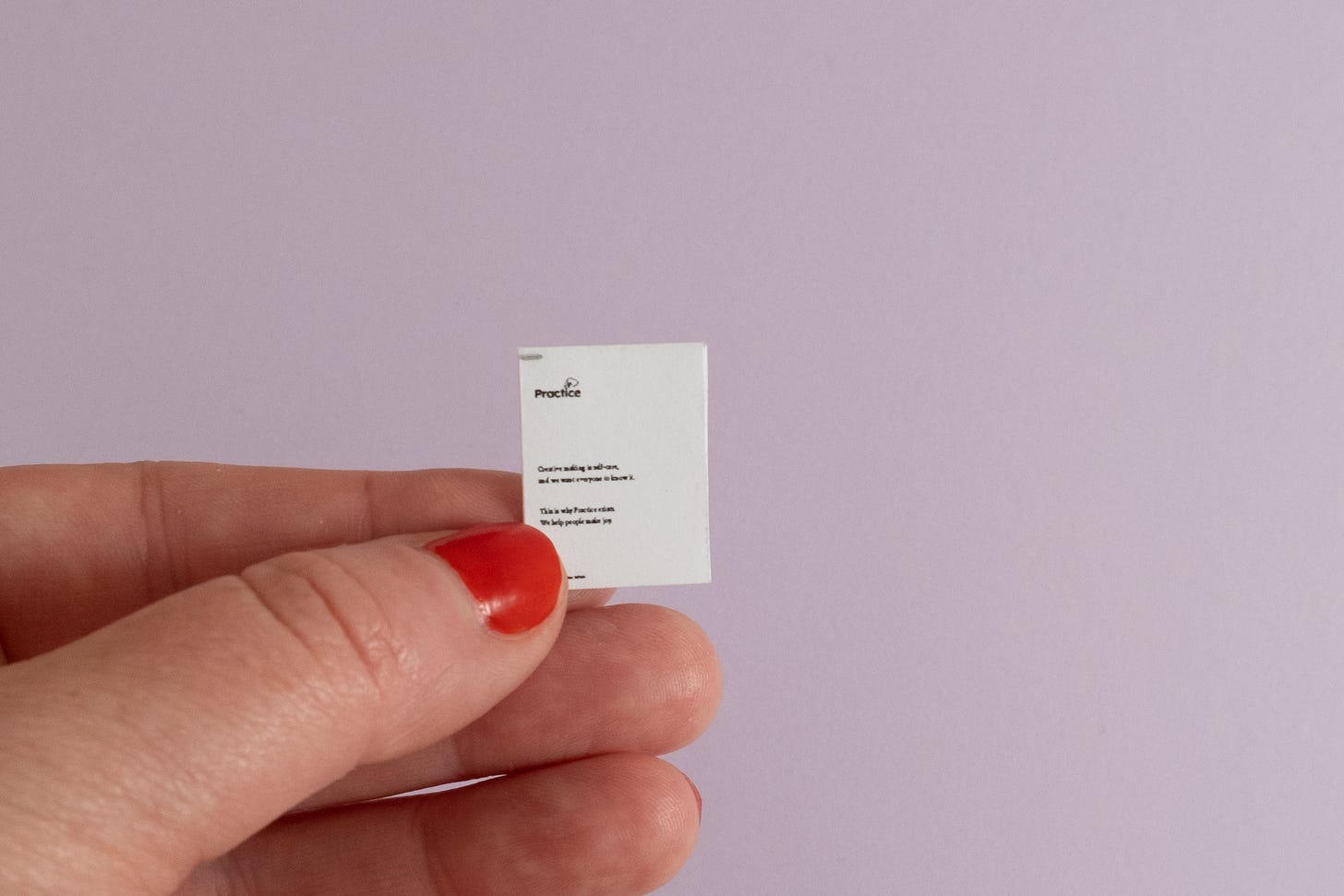Chicken, egg, memo?
Taking steps towards being "ready"
Ben and I are still on the fence about how we want to fund our startup.
We’re bootstrapping right now and trying to delay fundraising for as long as possible, for many reasons. First and foremost, we’re not sure if traditional VC funding is the right move—or even an option—for us. But if we do go down that road, we know it’ll be incredibly time-consuming (and a real grind) and extra challenging as a consumer product in 2024, especially with only a sprinkling of AI. So, we’ve been focused on getting more signals from the market to increase our odds.
We also want to be ready.
What does “ready” look like?
A few months ago, I had coffee with a founder in my network, and he shared this advice: “Don’t talk to an investor unless you’re REALLY ready. If you mess up, it’ll be two years before you get another chance to pitch them.” He was speaking from personal experience, and I’d much rather learn that lesson from him than firsthand (see my last post about learning painful lessons). So, what does “REALLY ready” mean for us at Practice?
Among other things, we’ve set the goal of creating an MVP that 100 users use and love before we feel “ready” to talk to investors. But, of course, that’s easier said than done. We need to acquire those users, which seems possible based on our waitlist numbers and an early marketing test, but we’re not naive. We can dream of a viral launch powered by word-of-mouth, but we know we’ll probably need to spend some marketing $$$ to hit 100 active users out of the gate.
We also need to, um, you know, launch a product. Our goal is to keep Practice v1 as lean as possible while still delivering a Goldilocks-level of “just enough” value, coupled with a vision for the future that gets people excited for what’s next. We have a strong hypothesis for what that MVP will be, but our decades of experience have taught us that it’s hard to define what’s minimally viable until a real product is in users’ hands. We’re getting closer to that, but it’s still a ways off since Ben and I are not engineers so we’re relying on nights-and-weekends help from kind friends to make the MVP happen.
Navigating a chicken-and-egg scenario
So, we’re in a bit of a pickle. We set the goal of 100 users loving Practice before raising money. But having funding would help us accelerate our path to MVP, allowing us to learn, iterate, and deliver value faster. It’s a chicken-and-egg scenario: we want signals before we fundraise, but we’d need to fundraise to get those signals faster.

Luckily, we found a great post making the rounds on Substack called “Raising a seed round 101” and it’s been super helpful as we navigate the “to fund or not to fund” question.
I won’t do a full recap, but if you’re founding something—or even tangentially interested in the startup world— it's worth a read.
Do we need a memo?
There’s a lot in the 101 post that we’re taking notes on, but one thing really drove us to action:
“A minimal deck and/or memo with a simple budget is all that you’ll need at this stage. You need to show there’s a real problem to solve, in a big enough market, and that you’re the one to solve it. That’s it.”
No surprise to anyone who knows me: we have decks. Lots of them! But we didn’t have a memo. The post references this memo from Rippling as a good example. Unfortunately, the download link is broken (boo!), but you can still read it and learn why a memo was helpful for Rippling on their blog.
The main reason we wanted to write a memo for Practice was captured in this quote from Rippling:
“Pitch decks are the default format for startup fundraising, but they have one major downside: they’re merely a visual aid to accompany an in-person presentation. The spoken presentation is as important as the visual one but, inevitably, you’re not always there to deliver it.”
They go on to explain that a memo, on the other hand, creates a standalone document that doesn’t require a voiceover. Makes a lot of sense!
I also saw it as a forcing function to write out a long-form version of our pitch and the story of Practice.
Overall, a memo sounded like a great way to get us closer to ready, so I started typing.
We have a memo!
After a few days of writing, I got the memo to draft stage and shared it with Ben. He added some great stuff, and we worked together to tighten it up. It was amazing to see months of research, discussions, and brainstorming culminate into a story that gave us goosebumps (#brag).
It starts with this absolute banger of an opener:
Creative making is self-care, and we want everyone to know it.
This is why Practice exists. We help people make joy.
We also articulated our strategy in a new way:
Matching someone to the right creative hobby takes finesse
It’s too hard to find the right materials to support a creative hobby
Making a creative hobby "stick" requires behavior change
If we solve all three, Practice creates a joy flywheel and changes the world by building awareness that creative making is self-care for all. Let’s goooooo!
So…what’s next?
In some ways, the memo was a distraction from our real conundrum: when (or if) we should fundraise. We’re still figuring that out, but writing the memo and making progress on our MVP is helping us get closer to being ready for whatever we decide comes next.
Interested in reading/providing feedback on our memo or helping us launch our MVP? We’d love that. Email me at erica@practicemaking.com!



Love this behind the scenes view of your journey, Erica!